Museum of the Sea of Lloret de Mar
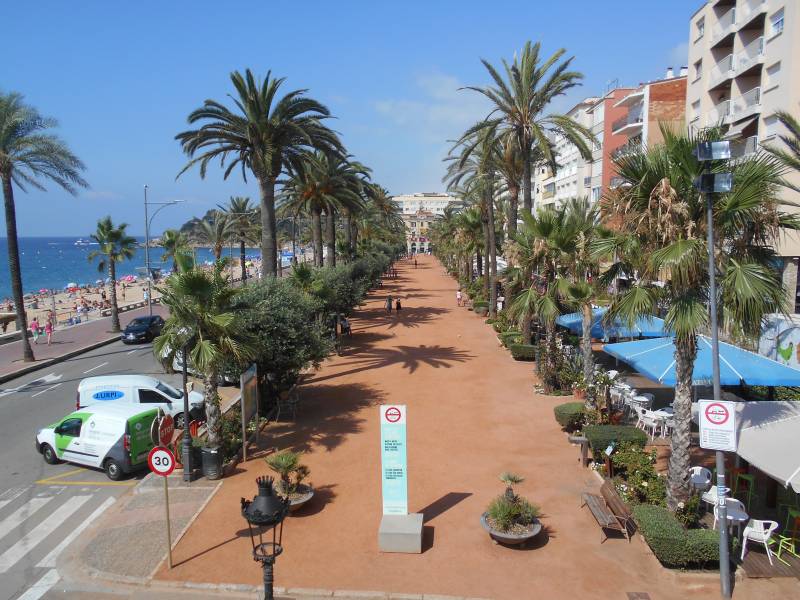
Embankment of the town of Lloret de Mar. Photo taken from the maritime museum
and just as the waters are never destined
these seas evaporate in the air and dissolve in the blood,
flowing through our veins, changing ourselves,
we will not cease to admire this heroic
period of our stories».
Agustí Pujol y Conille. Elegy to the sailor of Lloret the fleet
Museums of the world. Today we will not get acquainted with the next exhibition of armor and weapons in one of the foreign museums. We seem to have seen enough of them and will see more. But for the sake of variety, let's take a look at the museum, which in Russia would be called "local history", but in the Spanish city of Lloret de Mar it is called the "Museum of the Sea". However, why this is so is quite understandable: this Spanish town on the Costa Bravo has always been facing the sea and is connected with it in the most intimate way.
The museum is small but very interesting. Tells about the history of the city and its inhabitants and is filled with many interesting items. So let's visit it and get to know its history better.
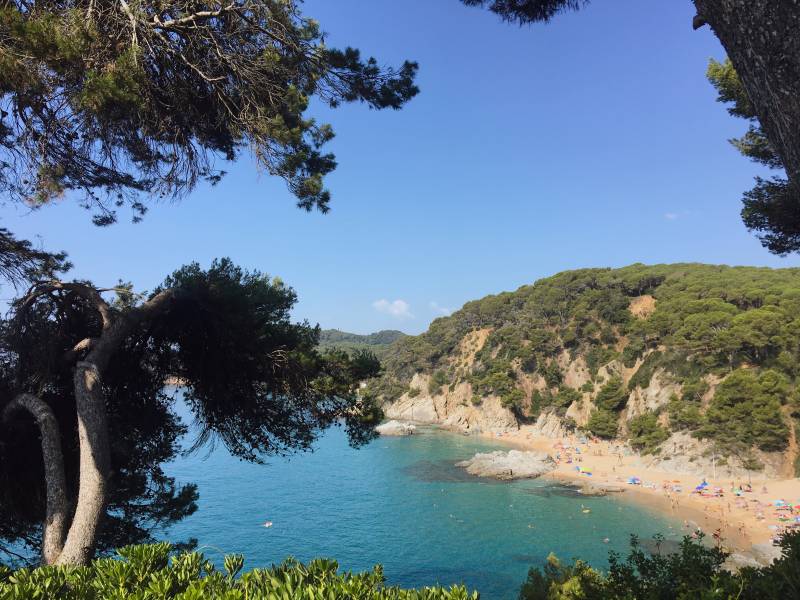
Lloret de Mar is a very picturesque and pleasant place to relax, there are many cozy beaches where there are very few people
And the history of the city of Lloret is, first of all, the history of the coastal people, who skillfully and gratefully used the routes of communication granted by the sea. The Lloretians, who had such an easy access to the world since ancient times, easily established contacts with other peoples and cultures, whose significant influence on the Mediterranean did not prevent them from remaining true to their origins and their identity.
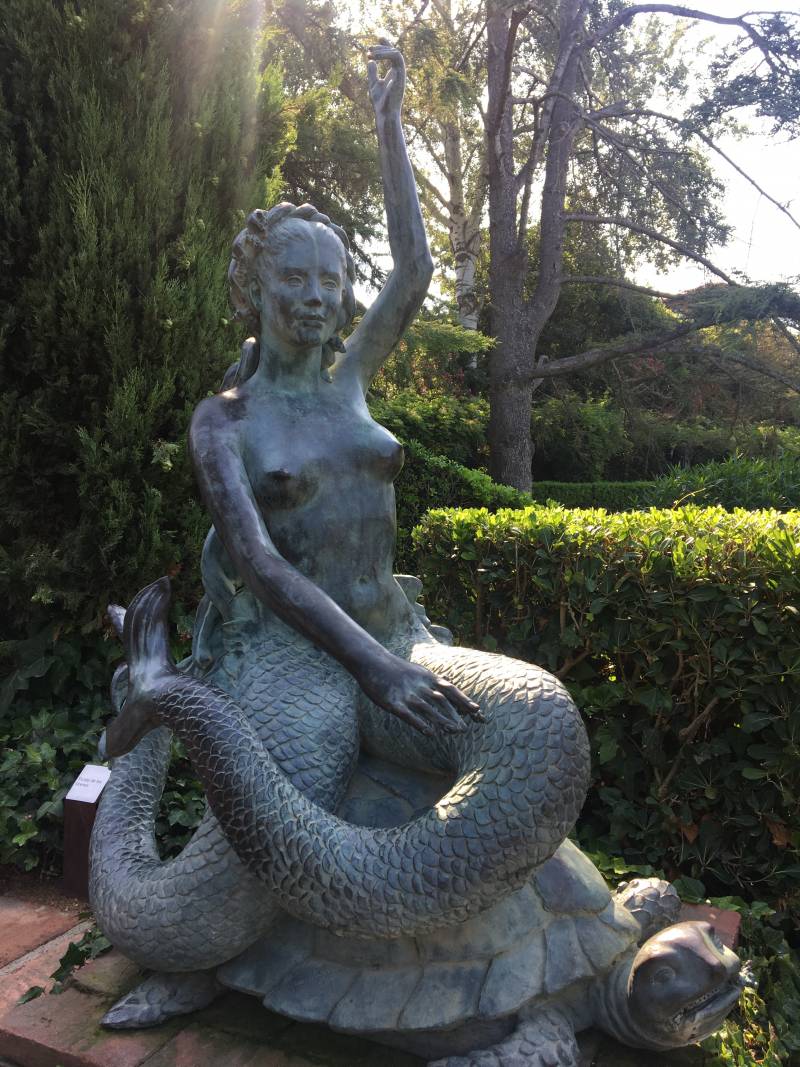
There is also a very beautiful Clotilde Park, where it is especially pleasant to walk in the heat. And, by the way, among the many beautiful sculptures that adorn it, there is this one - a completely “correct mermaid” with two tails. All single-tailed mermaids... "wrong"
Distant past
There is numerous evidence of the existence of a settlement in the vicinity of Lloret during the Lower Paleolithic. There is also reason to believe that even the Iberians fished here. At one time, the Romans landed on the coast of Fenals, who founded the production of ceramics there, which ships transported to other ports of the Mediterranean.
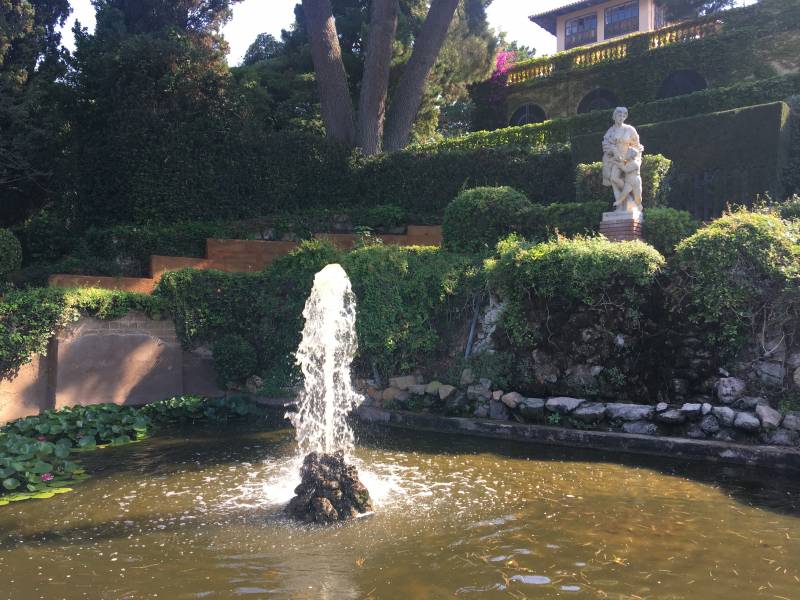
In the Clotilde Park there are several fountains refreshing the air, and lower on the shore in a cozy bay, again, the beach...
14 1001 October, the
October 14, 1001 is a date that went down in history thanks to ... a debt that arose between the counts of Barcelona and the viscounts in Girona. That is, it became the day when Lloret gained independence from the jurisdiction of Masanet, to which it previously belonged. Since then, the life of the city has become even more firmly connected with the sea.
On January 23, 1079, the parish church of Sant Roma was founded, territorially very close to the castle of Sant Joan. Since then, from a castle that stood proudly on a cliff near the coast of Fenals, it was easy for the feudal lords to control the people who were engaged in agriculture and fishing in the district. So, in one of the documents it is said that in 1372 Bonanat Pujol offered a handful of fish as a fee to the representative of the feudal lord of the territory, namely: the chapter of the canons of the Girona Cathedral.
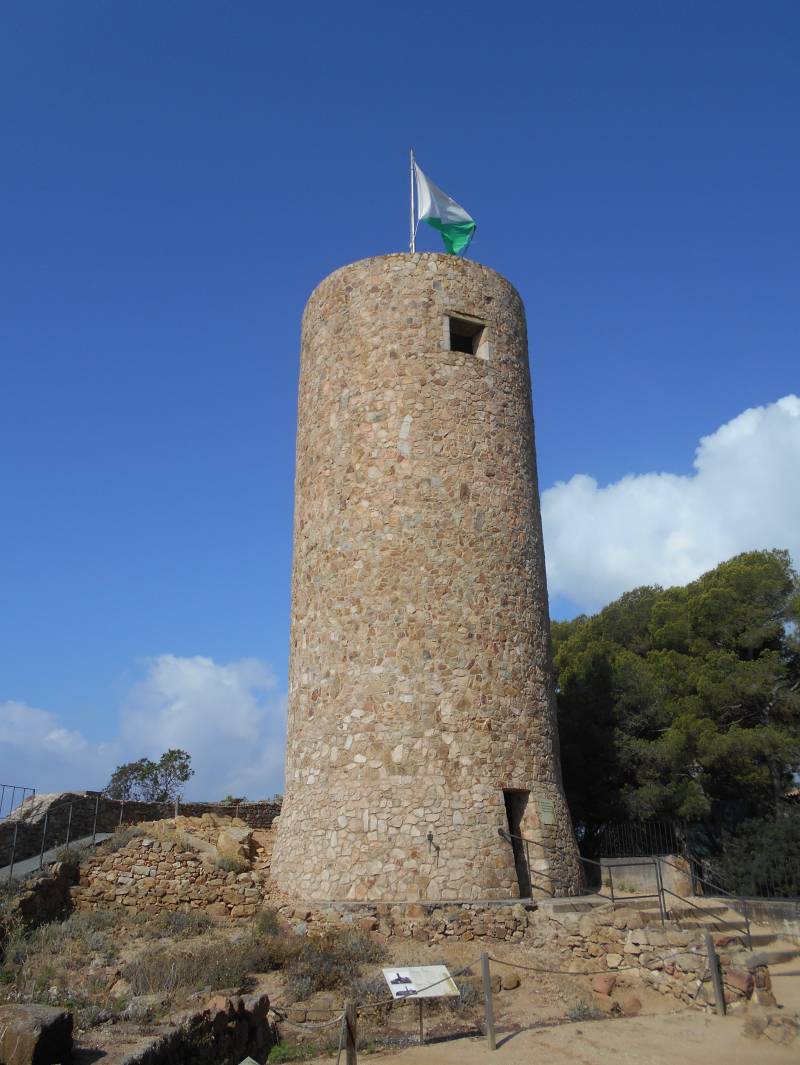
From those glorious knightly times, on the shore among the pines, the tower of the castle of Sant Joan rises ...
Passion for sailing
For the inhabitants of Lloret, the sea has long been the main route of communication. In the Middle Ages, it was a good alternative to the meager and often dangerous land roads. The desire to bring the distant world closer was manifested even more strongly in modern times. So, in the XNUMXth century, the local population significantly expanded the network of shipping routes, since the ships built in the shipyard on their native coast already allowed this to be done.
Moreover, the Lloretians very skillfully used the forest resources of the forests surrounding the city for the production of barrels and charcoal (on which they forged their anchors and other metal gear), as well as corks from cork oak bark. Local wine was poured into barrels and transported almost to the ends of the world, so great was the craving for adventure and profit among the locals, although, of course, one usually did not interfere with the other.
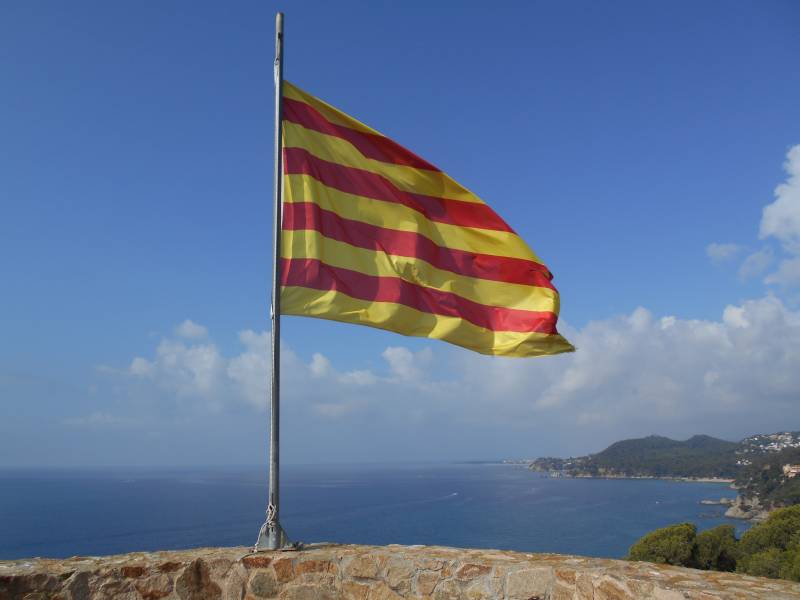
... and it would be very strange if the Catalan flag did not fly on it!
The life of Lloret is in some way the story of a people who discovered the world, then calmly returned to their native land and devoted themselves to growing grapes and vegetables. Lloret keeps memories of the return of the ships after fishing at sunset, of the nets scattered on the coast that needed to be dried and mended. Lloret is a memory carefully kept in the recesses of the city's history.
However, usually the inhabitants of Lloret made coastal voyages for trading purposes from port to port along the coastline, without going deep into the open sea. Such navigation is typical for the Mediterranean Sea. Coastal navigation, in which the inhabitants of Lloret and, consequently, most of the Catalan coast, were involved, was a kind of driving force for the country's maritime economy.
Ships sailing from Lloret eventually moored in the main Catalan and Valencian ports, as well as in Cadiz, from where large sailing ships headed for the American continent. Such navigation in the waters of Lloret has been known since the XNUMXth century, but only in the second half of the XNUMXth and early XNUMXth centuries did it become widespread.
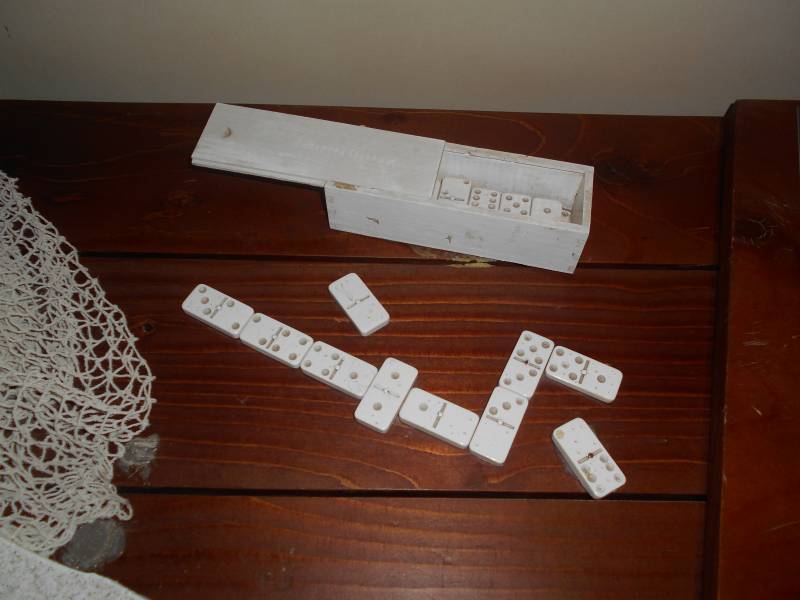
How to kill time at sea, when the wind is fair and even and there is absolutely nothing to do on board the ship? Here's how to play dominoes!
Carrier or mizzen
We have a mizzen - a mast or a sail, and in Lloret - a typical coaster for sailing along the coast of Catalonia. One mast, tilted forward, is at his bow, and a Latin sail is attached to it, and the other is standing upright, at the stern. This is a mizzen mast, and the name of this vessel comes from it (it was also called a transport vessel).
The crew of the ship usually included from three to seven people, depending on the dimensions of the ship. The ship was loaded and unloaded ashore at all points along the Catalan coast. Before the invention of the railway, and when there were very few land roads, it was the fastest way of communication on this coast, both for the transport of passengers and goods. A particularly important role of this transport was that it was in this way that the goods were delivered to Barcelona, which were then loaded onto large sailing ships heading across the waters of the Atlantic. The construction of such small ships was of great importance for the development of the Lloret shipyard at the end of the XNUMXth century.
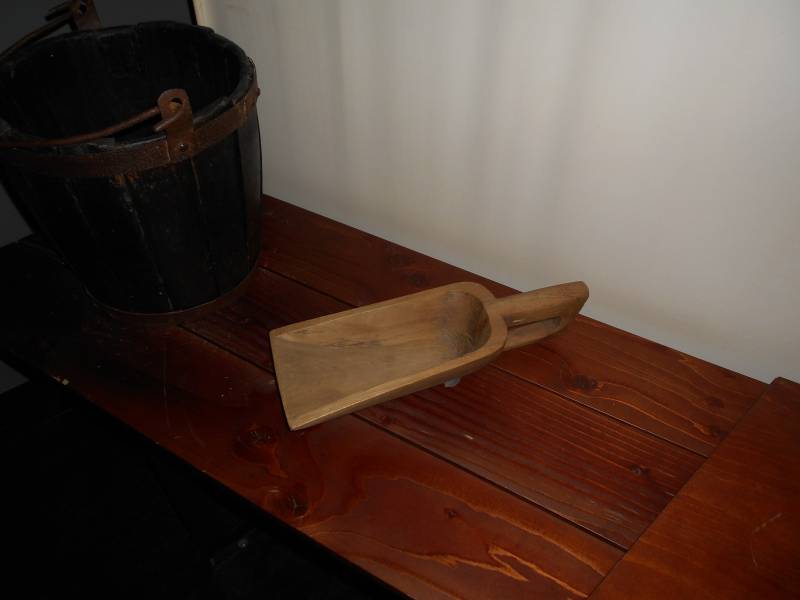
Funny wooden bowl. He was in every boat so that there was something to bail out water
Londro
This was the name of a fairly common ship in the Mediterranean Sea, which was used until the middle of the 50th century. Some of them crossed the Atlantic Ocean. They are easily distinguished by their sails: the foremast has rectangular sails, and the mainmast has latin sails. The carrying capacity of the Lloretian londro was about 1795 tons, and among those built in Lloret from 1815 to 50, it ranged from 82 to 105. In its shape and type of spars, the londro is very similar to the ping, although the latter is smaller in size. It is assumed that there were two types of particularly large londro, and some of them were even larger than brigantines, such as the Virgen del Carmen londro, owned by Captain Josep Gros of Lloret. The carrying capacity of this ship was XNUMX tons.
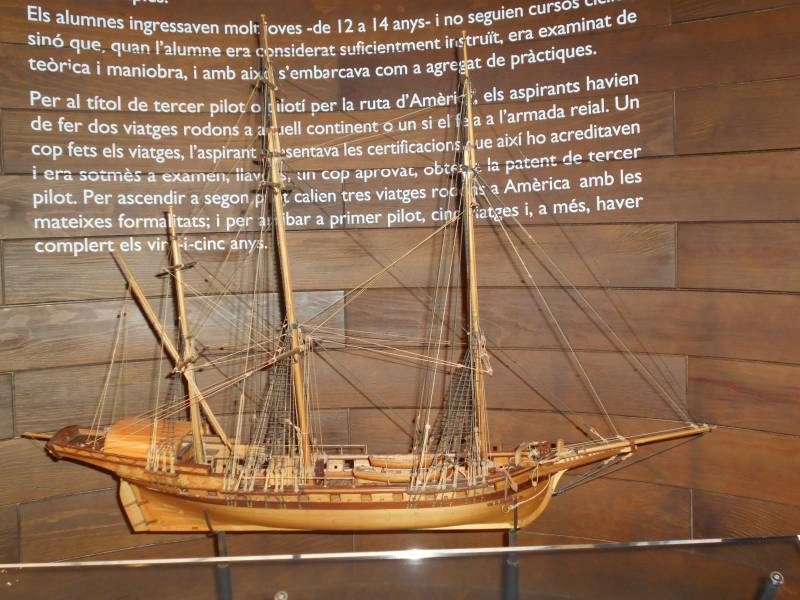
The museum has a wonderful, simply wonderful collection of wooden models of old sailboats, and precisely those that were built at the shipyards of Lloret
Xebec
Her spars consisted of three masts arranged in a rather specific way. One is on the bow, tilted forward, the second is in the center, and the third is aft (both of the latter are strictly vertical). Shebeka usually sailed under Latin sails. It was a fast sea vessel. It was used by the Berbers for their predatory purposes, until the government decided to build a fleet of military shebeks, numbering 32 guns, to combat piracy. In the second half of the XNUMXth century, they were widely used in the merchant fleet of Catalonia.
Ping
This is a ship with Latin sails, rigged like a xebec, but with a larger draft and a wider bow. It had two main masts - the foremast and the mainmast, as well as another smaller one - the mizzen mast. The ship could also go on rectangular sails.
At the turn of the 100th-XNUMXth centuries, in addition to coastal navigation, with the help of which they reached the north of the Iberian Peninsula, it was on the ping that trips were made to the Antilles. Its carrying capacity was XNUMX tons.
At the end of the XNUMXth century, among other pings built in the Lloretian shipyard, were the Nuestra Señora del Rosario, owned by the Lloretian Josep Macia, and the San Antonio de Padua under the command of Josep Salvador, who was popularly dubbed " Perebot "- also a native of Lloret.
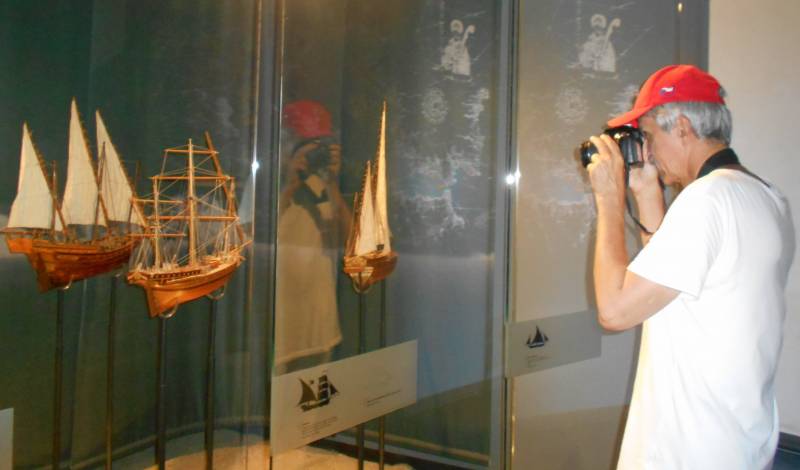
Author at work...
Ketch
The spar in this vessel has a number of features. The main mast was like on a schooner, and the foremast was like the main mast on a shebek. It was also fitted with a bowsprit and a boom like a large sailing vessel. This ship, not very original, looked like a schooner, and was used in a similar way. The carrying capacity of the ketch, created by the Lloretian shipyard, ranged from 50 to 100 tons. Some of them, in addition to coastal navigation, were also used on transatlantic routes.
tartan
This vessel had Latin rigging. Usually the mast stood in the middle of the length of the ship, but there was also a small mizzen mast, although there were also large tartans, on which the topsail was also raised. In Lloret, tartans belonging to local owners and associates have been found since the middle of the 20th century, the carrying capacity of which ranged from 90 to 1796 tons, such as the Concepción tartan, which belonged in XNUMX to Roma Souris. Presumably, these ships were very similar to the Canarian sloops, since there are documents where they are mentioned under the name of both "tartan" and "Canarian sloop".
Sailing ships were built directly at the shipyards located right on the shore, where the tourist beach is now located. These were rather uncomplicated structures under the open sky, on which carpenters gradually turned a simple tree into ships. Basically, ships with Latin sails were built at the Lloretian shipyard, which were suitable for both fishing and coastal navigation.
But after the introduction of free trade with America, the shipyards expanded so much that it became possible to build about 150 ships for long-distance navigation. Schooners, polecras, brigantines, frigates, built by the efforts of ship carpenters and other craftsmen, gave the Lloretian coast an active working rhythm, and in addition it was also a very entertaining sight.
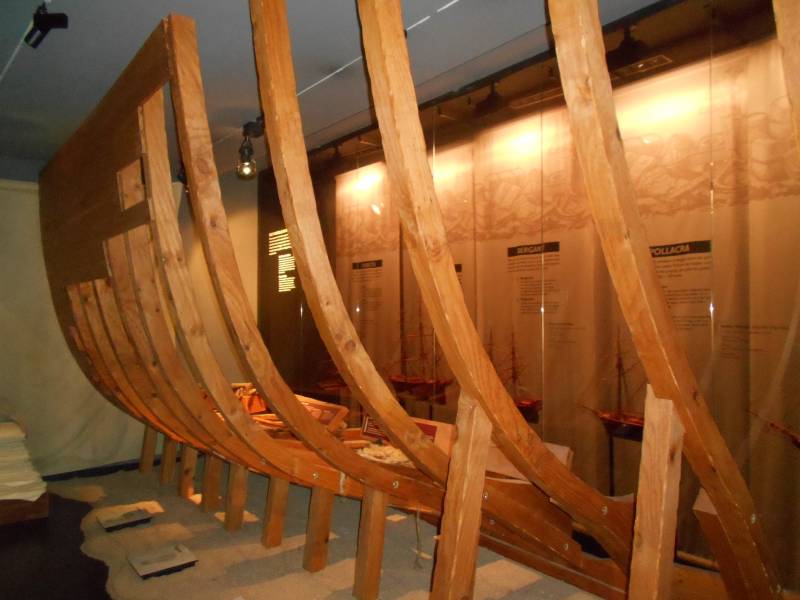
This is how they were built...
ship carpenters
It was a separate group of craftsmen engaged in the construction of ships. Their main working tool was an adze, a kind of ordinary peasant hoe. Under the direction of one ship carpenter, other ship carpenters, sawyers, blacksmiths, as well as many apprentices worked at the same time. Among the outstanding ship carpenters of Lloret are Agusti Macia, Agusti Pujol, Sebastia Pujol, Bonaventure Ribas and Joaquim Ribas, who worked tirelessly on the construction sites of the time.
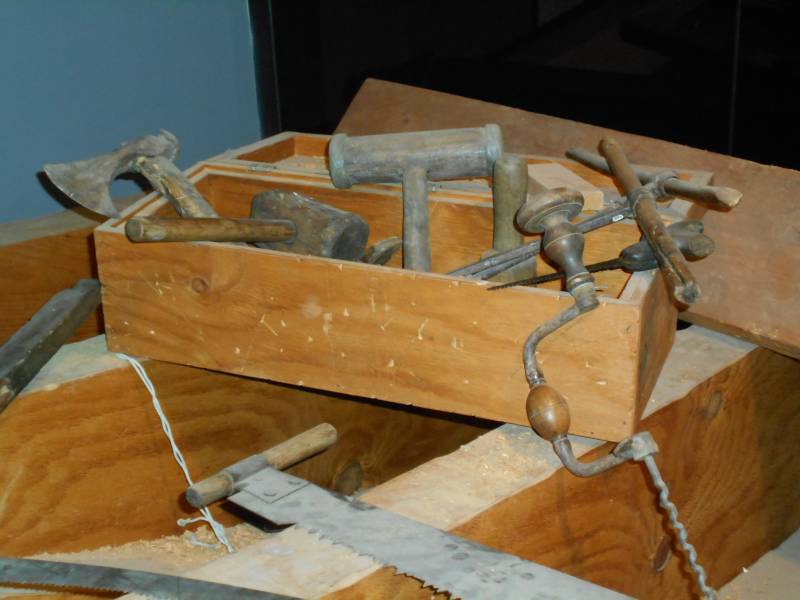
Ship carpenter's tools
Ship caulker
The main task of the ship's caulker was to carefully close up the joints of the boards on the ship in order to avoid leakage. To do this, they laid tow in the gaps between the boards and stretched it with a special iron stick, the so-called "opener". After that, they covered the hull of the ship with a layer of resin inside and out.
Sail
Setting the sails on the ship was the last operation before launching. Having taken measurements, the craftsmen sewed sails from long and very strong pieces of canvas or, as we would say today, tarpaulin. To protect their hands, they used special gloves with iron layers at the level of the palms. The thread for sewing was rubbed with wax - so it slipped more easily through a thick layer of fabric.
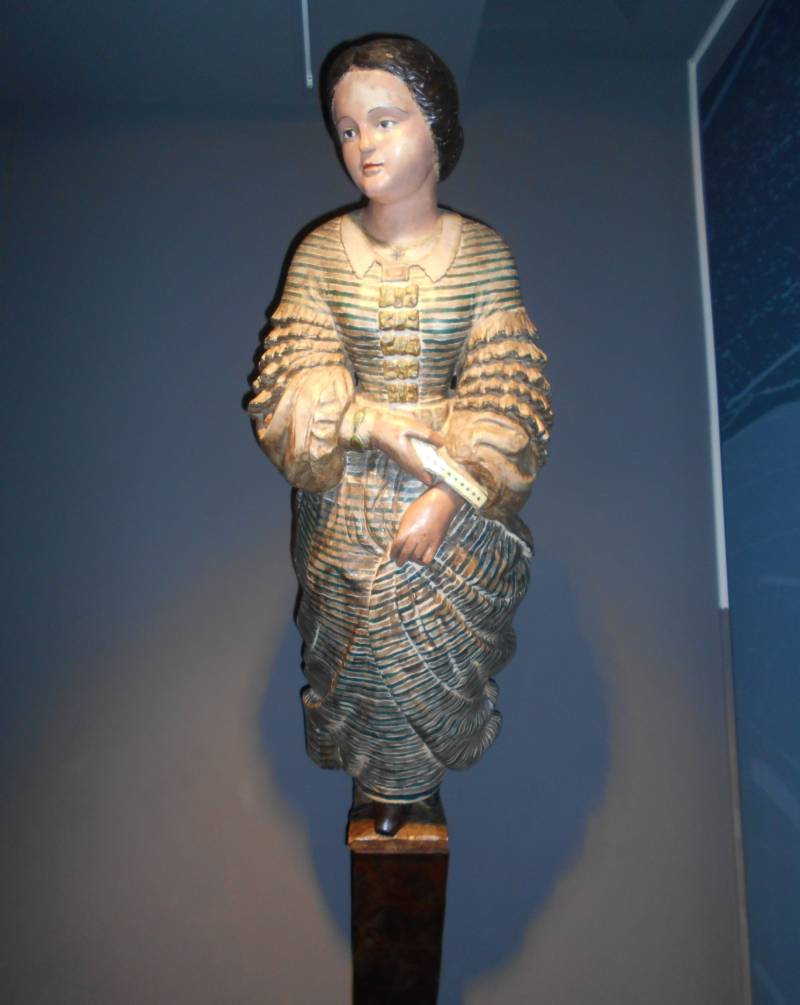
Nasal figure
Carved figure in the bow of the ship
One of the typical details of all pre-existing sailboats was the presence of figures that adorned their bow. Special carpenters-sculptors carved sirens, angels, Indian chiefs, eagles, lions from wood, which gave the ship a unique look. So, on the bow of the Bella Aurora corvette, built in Lloret in 1848, a portrait of the girl Maria Pares, daughter of Sylvester Pares, the captain and owner of the ship, was depicted.
Long-distance ships
So called sailboats capable of crossing the ocean. Their sails, as a rule, were rectangular in shape and were worn on two or three large masts - the mainmast, foremast and mizzenmast. Three-masted ships were mainly represented by ships such as frigates and corvettes, while brigantines and schooners were two-masted.
Schooner
Schooners or pilot boats had two or three masts and, due to their high performance (schooners did not require a large crew), were very popular.
Brigantine and frigate
Brigantines from Lloret are two-masted ships with three-part masts and straight sails. In addition, there is a mizzen with a sail on the main mast - contra-mizzen. This is the most popular type of ship ever produced in Catalonia.
The largest ships were frigates (not military, no, that was the name of merchant ships), always three-masted and with direct sailing weapons. When the agreements on financing the voyage were successfully signed, the goals were clearly set, and the ship was ready to fight the elements together with the crew hired on board, a solemn moment came: passengers were boarded, sails were raised, the ship was anchored and headed for America.
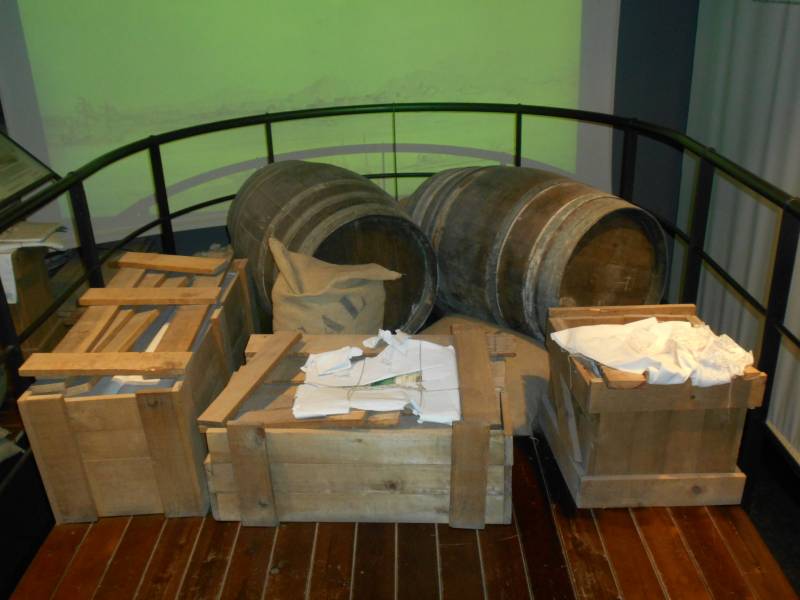
Ship packaging
The blows of fate
In addition to painful illnesses, many other dangers lay in wait for passengers on their journey across the ocean. Powerful wave impacts could lead to the death of the ship. Everyone knew that the risk of shipwreck was by no means excluded. Whenever there was any indication of a storm, the captain demanded that the entire crew, including male passengers, go out to fight the elements. Sails were lowered, which, if necessary, were used to close leaks. In exceptional cases, it was required to throw the transported cargo overboard, and then everyone was engaged in this, including women.
After a violent storm, it was customary for sailors to pay tribute for saving lives. Many of them already on the shore made donations in temples and monasteries. Among such offerings could be miniature models of ships or paintings painted by the sailors themselves or commissioned by artists, which depicted scenes of the crew's fierce struggle for life. And I must say that in the Museum of Lloret there are a number of such votive gifts!
Threat from pirates
The Lloretian merchant fleet, both coastal and long-distance navigation, was not immune from attacks by corsairs and pirates. The ships were attacked mainly by North African, as well as French and English pirates, depending on who Spain was at war with at that moment. Spanish ships were also attacked by South American pirates.
North African piracy
In the XNUMXth century, Algerian pirates were a real scourge for the coastal ships of Lloret.
On January 25, 1766, the entire crew of the Santa Cristina, including two Lloretian co-owners, merchant Joan B. Bonet and sailor Joan Oliver, was forced to say goodbye to the ship and all the transported goods as a result of an attack by a Mauritanian xebec near Castelldefels. Therefore, in the very first port, landing on the shore, they submitted a protest, testifying before the naval notary the theft of the ship and their escape in order to avoid being enslaved.
In Lloret, as in many coastal cities, there was an organization - the brotherhood of Sant Elm, which helped those captured by the Moors to swim to freedom.
English corsairry
At the end of the XNUMXth century, Spain was at war with England. This was a contributing factor to the frequent attacks by English corsairs on Catalan ships.
On September 22, 1799, at two o'clock in the morning, the owner Joan Puig of Lloret set sail from Barcelona on his merchant ship, bound for his hometown. When he sailed near Caldetes, he noticed that he was being pursued by an English frigate, because of which the captain and crew were forced to send the ship to the coast and leave it, landing in the area of Santa Cristina. Two boats were lowered to seize the cargo on the English frigate, but the alarm was already raised on the shore and the attackers were forced to retreat. Nevertheless, seven or eight cannon shots were fired at the settlement from the side of the English frigate.
Colombian corsairry
Problems in maintaining the Spanish colonies were resolved at the end of the XNUMXth century by their liberation, but this, in turn, led to the emergence of Colombian corsairs, which covered not only Atlantic waters, but even the coast of the Iberian Peninsula.
In response, the Lloretians also took up corsairism. So, the Lloretian brigantine "Santa Eulalia", popularly called the "First of Catalonia", became the first corsair ship. That is, she was armed and had the appropriate authority from the government.
But on May 14, 1825, returning from her third trip to the island of Cuba, already approaching the coast of the island between Capes Trafalgar and Espartel, the ship unexpectedly met with the Colombian corsair ship Vencedor under the command of Captain J.W. Borthenton. After a fierce and prolonged battle, the Catalan ship was sunk. The crew was captured and taken to Gibraltar.
On April 1861, XNUMX, the corvette White Aurora from Lloret captured a pirate ship on its way from Buenos Aires to Havana.
Here it should be noted that among the inhabitants of Lloret de Mar then arose ... a rather strange "craze" to travel to America to work. It was believed that there you can get rich much faster than at home. Therefore, the inhabitants of the city rushed across the ocean, started their own “business” there, and when they got rich, they returned back (they definitely returned!), Built a house for themselves on the shore overlooking the sea and lived there on a percentage of the capital. They called them "Americans" and treated them with great respect, but they laughed at those who returned with nothing.
So the influx of Catalans to America in the 970th century was very large. Moreover, it is known that out of 1830 Catalan merchants who entrenched themselves in Cuba from 1850 to 36, XNUMX were Lloretians.
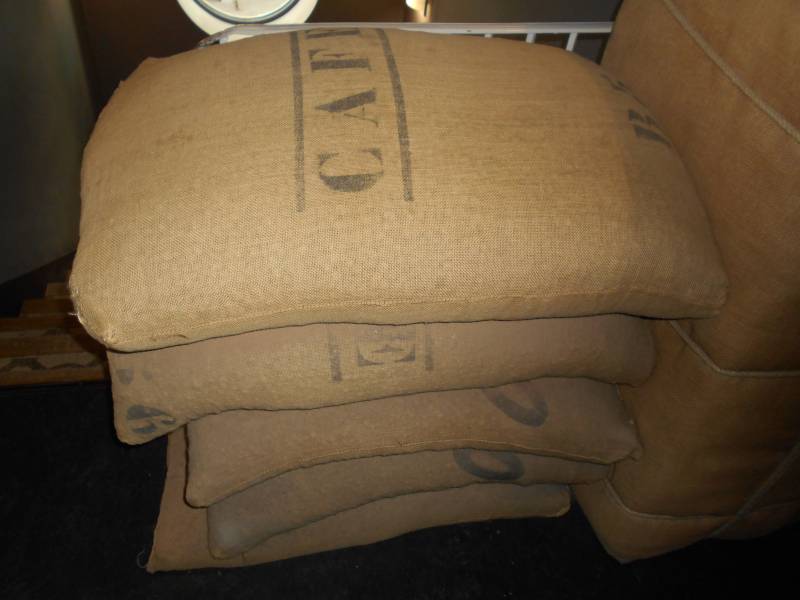
Sugar sacks from America
What did you trade?
Cured and salted meat (called "tasajo" in Argentina), which was also sold to Brazil or Cuba, where it was used as food for slaves. Then the ship quite often went light to New Orleans, where it was loaded with the cotton needed in Catalonia.
An alternative and fairly common route was to Cuba or Puerto Rico with Catalan wine; tobacco, sugar were loaded at the destination and a course was taken for other American ports. As a result, the ship returned to Catalonia with a cargo of sugar, coffee, tobacco, Venezuelan cocoa and leather from the regions of the Rio de la Plata basin.
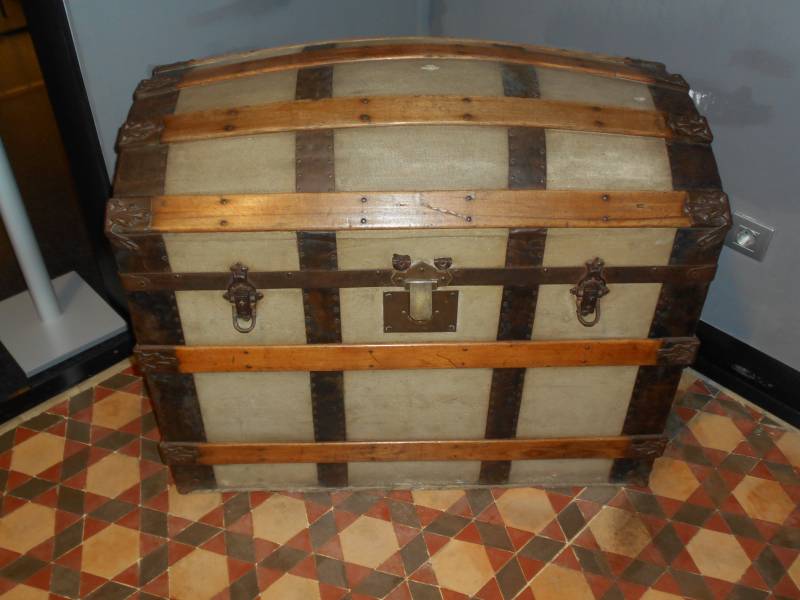
Wealthy Passenger's Travel Chest
From Spaniards to Americans
In Barcelona or in Tarragona, Penedesian or Tarragona wine was loaded onto ships and sent to Puerto Rico, Cuba, Montevideo, Buenos Aires and Mexico. Various local types of ceramic tiles were sent to the Antilles and Mexico. Salt from San Pedro de Pinatar, Torrevieja, Ibiza, Cadiz was sold in Montevideo. In addition, Catalonia was famous for its production of cotton fabrics, especially chintz.

Armchair from the cabin
From Americans to Spaniards
Accordingly, high-quality overseas redwood and logwood wood was brought from America to Alicante, Valencia, Barcelona, Mallorca and sometimes Tarragona, which was used to create furniture and barrel staves.
From New Orleans came cotton, which on Catalan soil turned into a beautiful printed fabric. Molasses (molasses) was brought from Cuba. In Baltimore, tons of kerosene were loaded so that the houses would have something to light kerosene lamps.
And, of course, it could not do without products such as tobacco, cocoa, cinnamon and coffee. The same tobacco was also smuggled in, and merchants also illegally imported miraguano (American palm fluff for filling pillows), pineapple confiture, rum (almost always Cuban).

Needless to say - a beautiful interior for any passenger ship!
The slave trade
Yes, yes, the participation of Catalonia in the slave trade is an undoubted fact, a shameful page in history, which cannot be ignored, since it constitutes a milestone in the history of Lloret.
Between 1790 and 1820, Catalan ships are thought to have transported some 31 slaves. Such a "cargo", as a rule, was transported under the guise of ebony. At the same time, more than 000 slaves often fit in a 30-meter vessel. So, the ship "San Francisco de Paula" built in Lloret in the middle of 600 headed from Havana to Africa. On the island of Fernando Po, the captain was to meet an intermediary who promised to get 1816 slaves. Then the ship went up the estuary of the Boni River and anchored. The loading of the "ebony" on the ship began.
But on January 23, 1817, when the ship, overflowing with unfortunate slaves, tried to go to sea, an unsuccessful maneuver led her to a shipwreck. The white crew fled, launching the boats, and the shackled slaves all died in the flooded hold.
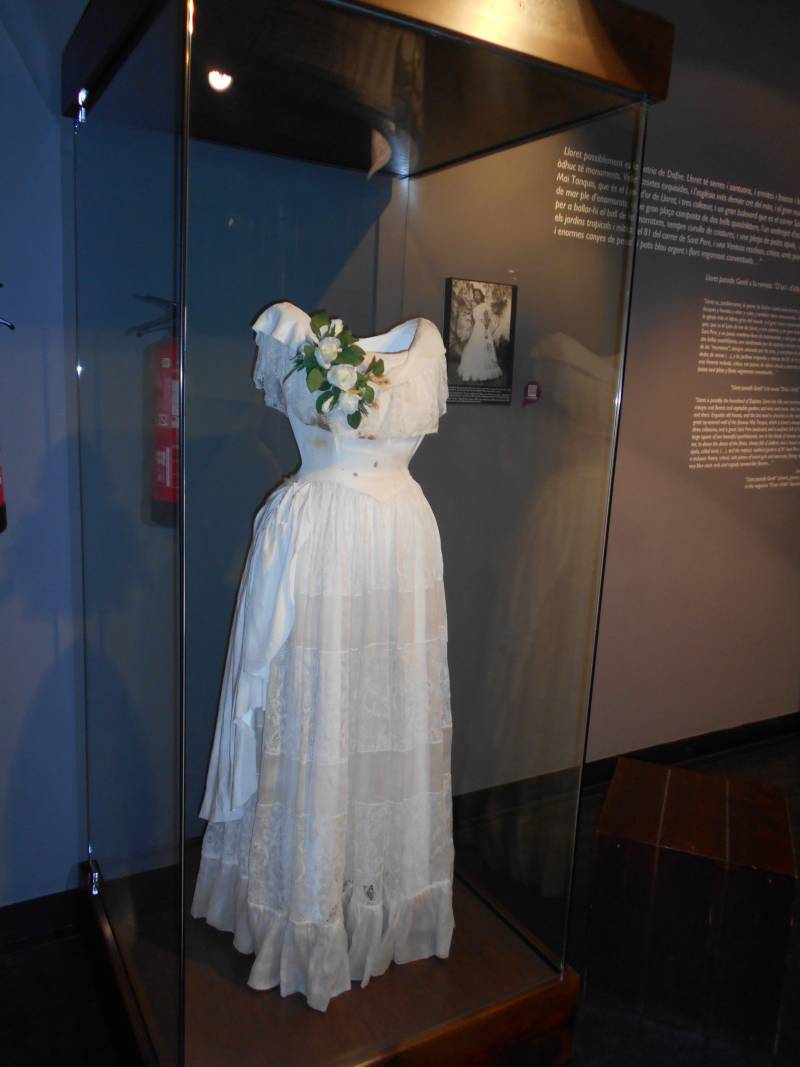
American bride's wedding dress. Returning to his homeland, he had to marry a local girl!
By the way, the last ship that left the Lloretian shipyard in 1895, returning from an expedition to Cuba, disappeared without a trace along with the crew. Then ships were no longer built in Lloret ...
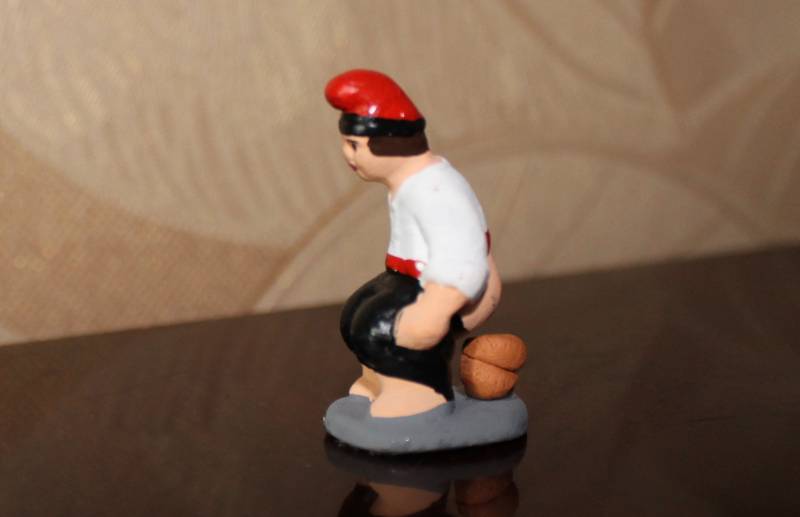
And this is a well-known kaganer. Well, how not to buy it as a keepsake of Catalonia!
Information